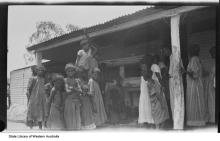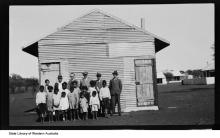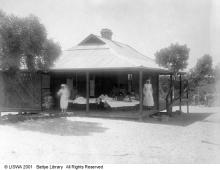Mogumber
The Government of Western Australian opened the Moore River Native Settlement in 1918. The Aborigines Act 1905 allowed government agencies to forcibly remove Aboriginal and Torres Strait Islander children from their families all over Western Australia and then send them to Moore River. There were many issues with health and sanitation and more than two hundred children aged 1 to 5 died at Moore River. Children often attempted to escape Moore River in order to return to their families .
0Established in 1918 by the Western Australian State Government, closed in 1951.
Moore River Native SettlementDebra Rosser, Moore River Native Settlement (1918 - 1951) (5 May 2014) Find & Connect https://www.findandconnect.gov.au/ref/wa/biogs/WE00948b.htm
WASouth West Aboriginal Land & Sea Council
https://www.noongarculture.org.au/whadjuk/
South West Aboriginal Land & Sea Council, About the Whadjuk Region, South West Aboriginal Land & Sea Council
https://www.noongarculture.org.au/whadjuk/
We were locked up at night. All the boys, young girls. Married girls and women what had no husbands and babies, they had one room. Another dormitory was for young girls had no babies. But we was opposite side of that, see? The boys' dormitory. I'm not going to complain about it because, you know, I survived. A lot of kids died. Depression time it was pretty hard (p. 92).
[Chief Protector] Neville got our money. We were working on a station. Some of them worked six or seven years. And the money come down here to that office here in Wellington St [Perth]. When I finished up, coming back from the Territory, I told who I was and I said, 'There's money supposed to be here'. I got 30 shillings - one pound ten - a red, white and blue blanket, and a pass to the Settlement [Moore River]. I said, 'Hey, I don't want your pass to the Settlement. I can go to the Settlement. That's my home' (p. 150).
Confidential evidence 333, Western Australia: man removed to Sister Kate's Orphanage in 1933 and probably working during the 1940s.
Human Rights and Equal Opportunity Commission, Bringing them Home: National Inquiry into the Separation of Aboriginal and Torres Strait islander Children from Their Families (1997)
Unknown Confidential evidence 333
Moore River Native Settlement, ca. 1930

Moore River Native Settlement, ca. 1930

Moore River Native Settlement, 1920: The mission hospital
